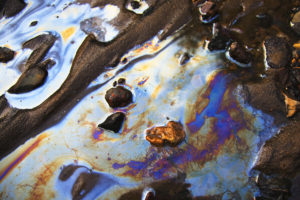 Mother Nature does her best to regulate the earth so humans, plants, and animals can live well. That being said, there are a lot of toxins out there, some manmade and some not, that are not aiding Mother Nature in her quest. Here are some of the most common toxins floating around the globe today as well as small steps you can complete yourself to help reduce them.
Mother Nature does her best to regulate the earth so humans, plants, and animals can live well. That being said, there are a lot of toxins out there, some manmade and some not, that are not aiding Mother Nature in her quest. Here are some of the most common toxins floating around the globe today as well as small steps you can complete yourself to help reduce them.
Radon
Radon is a gas that has no odor or color. It comes from the natural breakdown of biological chemicals like uranium, and it’s radioactive. It can be found anywhere in the United States, and its levels vary from location to location. The problem with this is that radon is the second leading cause of lung cancer in the United States today. The U.S. Environmental Protection Agency (EPS) and the Surgeon General’s Office have estimated that as many as 20,000 lung cancer deaths are caused each year by radon.
Unfortunately, there are many ways that radon can get into your home and affect your health. Because that’s true, and that the levels can vary from day to day, you should test your home for radon periodically. If you haven’t tested your home in the last two years, or you’ve remodeled since then, it’s time to test again. If you find levels higher than 4 picocuries per liter of air (pCI/L), you should immediately call the state EPA office for a list of qualified mitigation contractors in your area. Then, you can make sure you seal off any possible entrances for radon and test periodically in the future.
Plastic
It’s no secret that there’s plastic everywhere. It’s safe to say that the majority of the products you purchase from the grocery store come in some kind of plastic container or wrapping. Plus, Americans use 2.5 million plastic bottles every single hour. There are two major reasons why that’s a problem. One is that a very small percentage of plastic actually gets recycled. The other is that many plastics are made with Bisphenol A (BPA). It has contributed to prostate cancer, fetal brain development, reproductive disorders, diabetes, and heart disease.
Thankfully, many companies are making BPA-free products, including water bottles. But plastic is still ending up in our landfills, lakes, oceans, and backyards. To help reduce this massive problem, try carrying around reusable water bottles, bringing your own plastic utensils from home for a picnic at the beach, or using glass and metal containers instead of plastic. Additionally, make sure you don’t purchase products that contain BPA because it can contaminate other products like toilet paper and napkins even when it gets recycled.
Greenhouse has essmisions
Greenhouse gas emissions are incredibly dangerous to the environment, and they typically come from motor vehicles. There are nearly 12 million trucks, rail cars, locomotives, and vessels moving goods over the transportation network. Some sources even say there are over 15 million. Of those, roughly two million of them are tractor trailers. According to the Environmental Defense Fund, freight movement currently accounts for 16% of all corporate greenhouse gas emissions.
While you may feel like you have little to no impact on this matter, you actually do. You can start by ordering less online to require less trucking haul. You can also join natural gas movements that encourage the use of less toxic fuels for freight shipping and the like. Finally, you yourself can drive less. Take public transportation, ride your bike when you can, and carpool with your friends. Every small step counts as progress.
Light pollution
Finally, light pollution is a serious problem too. Why is light pollution a problem, you ask? Well first, light pollution interferes with wildlife migratory and breeding patterns. Unnecessary outdoor lighting wastes energy and contributes to greenhouse gas emissions too. Glare from bad lighting leads to unsafe driving conditions, especially for older drivers. Finally, constant exposure to artificial lighting can interfere with human metabolism and sleep.
One of the biggest things you can do to help reduce light pollution if switching to LED lights. By 2019, LEDs are estimated to achieve a 53% penetration of the global lighting market. Plus, they are 80% more efficient than traditional lighting. More than 95% of their energy is converted into light and only 5% is wasted. Compared to fluorescent lights, LEDs draw less power. A typical 84-watt fluorescent can be replaced by a 36 watt LED to give the same level of light. Less energy use reduces the demand for power plants and decreases greenhouse gas emissions.
This may all sound gloomy, but you as one person can actually make a difference. It only takes one drop of water to tip the bucket.





Leave a Reply